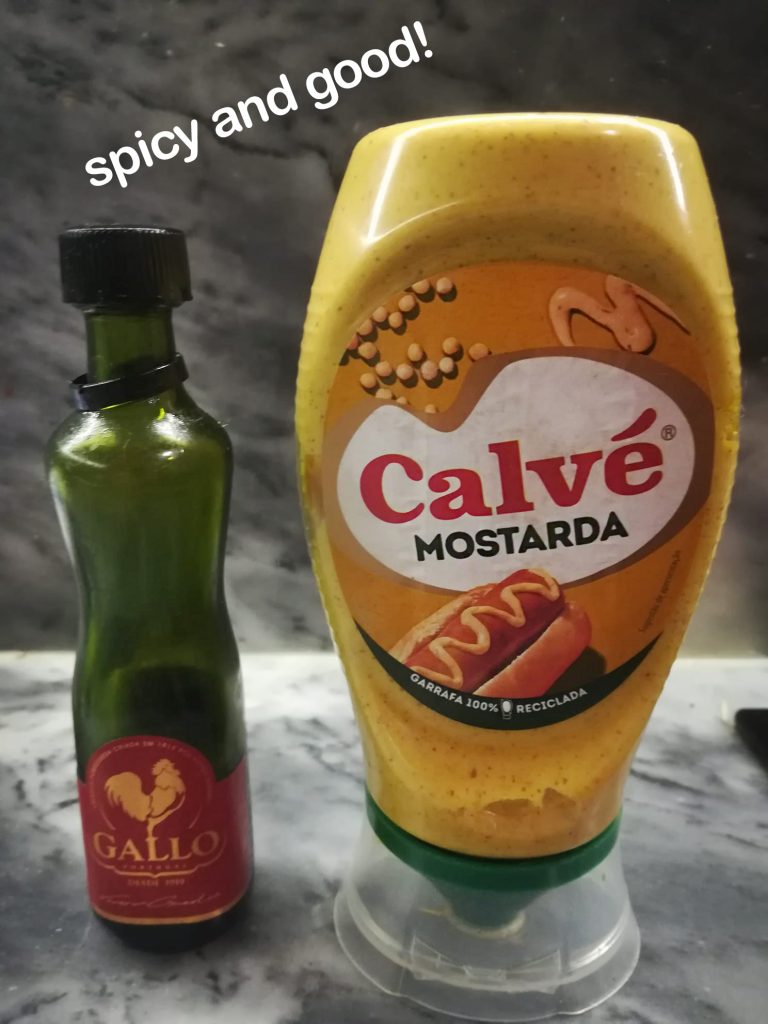
The highest form of midday indulgence. Or post-seafood dinner beer soaking. Or, whenever you might fancy a spicy, garlicky cut of lean steak inside a crusty bread roll. Which, if you’re sensible, should be often.
The prego – steak sandwich found up and down Portugal – seems to be the namesake of a one Manuel Dias Prego, a fellow who served up fried sliced veal sandwiches alongside local Colares wine in his 19th century tavern at Praia was Maçãs.
The word prego, though, also means ‘nail’. These days, countless snack bars and cervejarias pay homage to Senhor Manuel by ‘nailing’ roughly chopped garlic cloves to the lean prego cuts before cooking. A knowing tribute? Probably not. But tradition, nonetheless, and a fine tradition it is.

With that in mind, you’ll need a meat hammer to recreate the most authentic prego no pão. Not only will this tenderize the meat for a softer bite (important stuff for a sandwich), but it allows you to ‘nail’ the garlic cloves into the meat, so you can also pay loving homage to Senhor Manuel.
The recipe below tries to recreate the simple prego as you’d find it in a typical Lisbon eatery, which means no marinating, no herbs, nor anything particularly intricate. In these places, they haven’t been marinating your prego for hours beforehand. It’s thrown together in a flash, and in that rapid simplicity lies much of its universal appeal (the prego is also popular in Mozambique, an ex-Portuguese colony, as well as a more ‘loaded’ version in South Africa, where lots of people emigrated to from Mozambique after the independence of the Portuguese colonies).
Finally, consider it an integral part of this recipe to accompany your sandwich with a fresh Sagres or Super Bock beer. In Portuguese cervejarias, where straightforward seafood dishes and beer rules supreme, many consider it customary to close out a seafood feast with a juicy prego no pão. Because seafood alone isn’t going to mop up all that beer.
The steak
Since prego is a very thin slice of steak, you’d be well-advised to go for a leaner, less fatty cut, like sirloin or rump.
If you can’t find a leaner cut for whatever reason, trim off the excess fat and tenderize with a meat mallet to break down the fibers. Since this is a sandwich you’ll be doing 100% of the cutting with your teeth, so this step (along with not keeping the steak in the pan for too long) is vital to keeping your jaw intact.

You can ask your butcher to slice the steak about half an inch (1-1.5cm) thick, or do it yourself from a larger cut at home with a long, sharp knife along the width of the meat.
Portuguese bread rolls (pão)
The bread you use should be crusty on the outside but airier in the middle. Most fresh Portuguese bread rolls, like papo seco, bola de água and carcaça, will do just fine here.
If you can’t find these you can easily make your own papo secos.
The (obligatory) extras
For the most life-affirming prego experience, get yourself a cheap bottle of table mustard and some very spicy Portuguese piri-piri oil (that’s the concentrated stuff made from malagueta peppers).

These obligatory extras are decanted lovingly on the sandwich, at the table, by the eater, and to their preference. Personally, I found my tolerance of both mustard and piri-piri skyrocketing as my prego consumption increased, to the extent that my fellow diners sometimes can’t even look at me our of fear.
Anyway, skip the dijon, ditch the whole-grain – standard, everyday yellow mustard is king here. The proof is in the prego.
How to make it
It’s very simple.
Press two cloves of chopped garlic about the steak, on both sides, sprinkle with sea salt and tenderize with a meat hammer until thin (or an empty wine bottle, if you don’t have one).

Next, heat up 2-3 tablespoons of butter in a non-stick pan over medium heat. Once bubbling, place the steak flat in the pan and cook for about a minute, basting with the butter. flip, repeat. The meat should be browned on both sides with a thin line of red in the middle.

Cut the bread roll widthways and throw them in the pan, fluffy side down. Toast in the pan drippings for about 30 seconds.
Place the steak between the bread, cut in half lengthways, and serve. Add mustard and piri-piri to your liking.
Eat, and be thankful.

Lisbon-style steak sandwich (prego no pão)
Ingredients
- 1 slice lean steak 1/2 inch thick
- 1 Portuguese bread roll
- 2 garlic cloves roughly chopped
- 1 bay leaf
- Yellow mustard to taste
- Portuguese p-piri oil to taste
- 2-3 tbsp butter
Instructions
- Press the garlic cloves into the steak and sprinkle both sides with sea salt.
- Tenderize the steak with a meat hammer (or alternative utensil, such as an empty wine bottle) until thin.
- Heat the butter in a non-stick pan over medium heat and add the bay leaf. Once the butter is bubbling, place the steak flat in the pan.
- Cook for around one minute, basting the steak with the butter. Once the steak has achieved some colour, flip, and cook again for another minute. The meat should be brown on both sides, with a thin line of red in the middle. Remove to a plate.
- Cut the bread rolls widthways, and place them in the pan, fluffy side down. Toast in the pan drippings for about 30 seconds, taking care not to burn the bread.
- Remove the bread from the pan, place the steak between the two pieces, and cut the sandwich in half lengthways.
- Serve with mustard and piri-piri at the table.

Leave a Reply